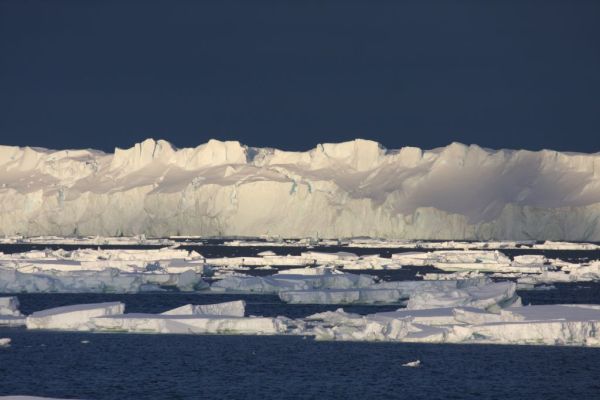A Flood of Warm Water the Size of 30 Amazon Rivers is Melting One of East Antarctica’s Largest Glaciers
21
December, 2016
If
we’ve learned anything this year, it’s
that few of Antarctica’s submerged coastal glaciers are safe from
the warming ocean.
Places that we once thought wouldn’t be vulnerable to melt for
decades or centuries are now starting to feel the heat of rising
water temperatures.
The
heat comes in the form of great floods of warmer than normal waters
running beneath the ocean surface and then eating away at the
undersides of ice shelves and sea fronting glaciers. These floods are
provided by the warmth forced into the world ocean by rising global
greenhouse gas concentrations. And
such invasions are happening around Antarctica’s perimeter with
increasing frequency.
But perhaps the most disturbing such event now ongoing is the
present warm water flood running in from the Southern Ocean toward
East Antarctica’s Totten Glacier.
Totten
is a truly gigantic glacier. By itself representing an ice mass equal
to that contained in all of West Antarctica’s many glaciers. If
large sections of Totten and the associated Aurora Basin were to
melt, seas
could rise by 12 feet or
more. During recent years, researchers
identified a great canyon running between 2,000 and 3,600 feet below
sea level and stretching six miles wide as
a weak point for Totten — whose glaciers sit in an enormous, below
sea level rift within East Antarctica.
Researchers
recently found that the floating ice shelf buttressing Totten was
melting from below.
As of 2015, they hadn’t identified a mechanism for this melt. But
they had a pretty short suspect list. This year, a
new study led by Dr. Stephen Rich Rintoul found
that a river of warm water flowing at a rate of 220,000 cubic meters
per second was flooding into the vulnerable canyon entrance to
Totten’s weak underbelly. The researchers determined that this
volume of warm water — equaling a flow rate more than 30 times that
of the Amazon River — was enough to account for the observed ice
shelf losses over recent years in the range of 60 to 80 billion tons
per year.

(The
Totten Glacier of East Antarctica contains about as much ice mass as
all of West Antarctica. Its catchment basin is roughly the size of
the U.S. Southeast. Much of it sits below sea level. And an ice shelf
buttressing the glacier’s largest outlet in a 6 mile wide and 3,600
foot deep canyon is rapidly melting. Once this ice shelf breaks
apart, ocean water will flood inland along a reverse slope and the
Totten Glacier will increase its rate of movement toward the ocean —
significantly speeding rates of global sea level rise. Image
source: Australian
Antarctic Division.)
…several lines of evidence support the conclusion that rapid basal melt of the [Totten Ice Shelf] is driven by the flux of warm [modified circumpolar deep water] into the cavity: the presence of warm water at the ice front, the existence of a deep trough providing access of this warm water to the cavity, direct measurements of mass and heat transport into the cavity, the signature of glacial meltwater in the outflow, and exchange rates inferred from the heat budget and satellite-derived basal melt rates.
Presently,
because the ice shelf floats, this melt is not adding to global sea
level rise. But the shelf acts like a cork that’s stopping the rest
of Totten from flowing into the ocean. And when the ice shelf weakens
enough, it will rift and break apart — leaving the massive glaciers
behind it exposed to the inrush of warm waters and removing the last
major barrier preventing them from bursting out.
Links:
Hat
tip to Robert in New Orleans




No comments:
Post a Comment
Note: only a member of this blog may post a comment.